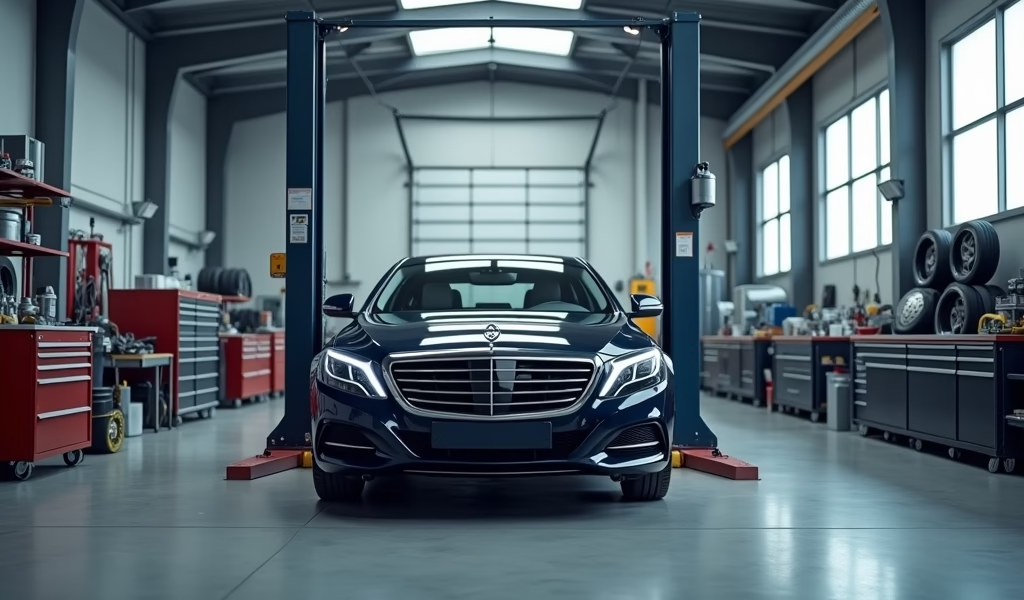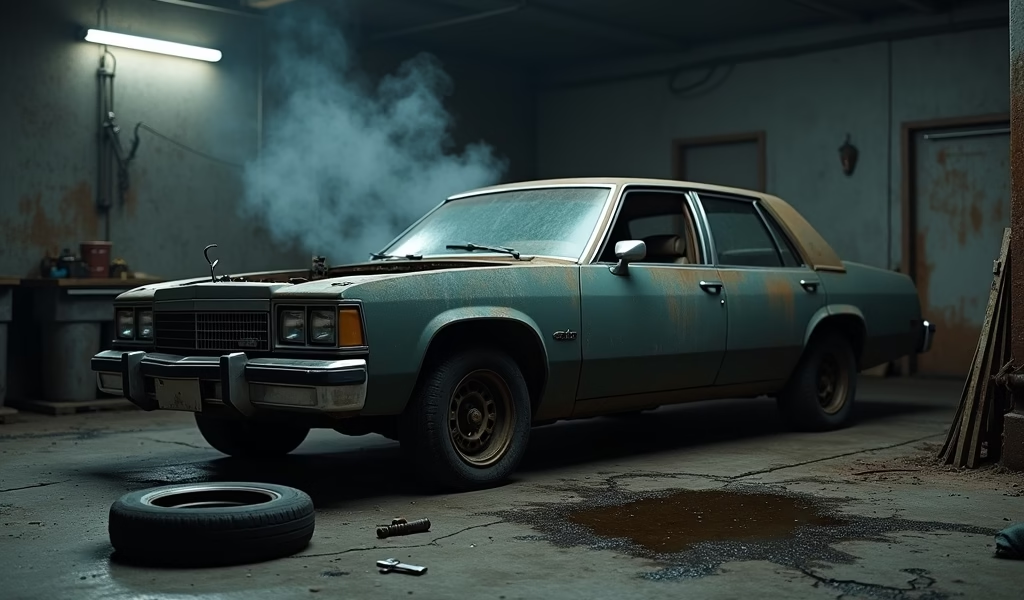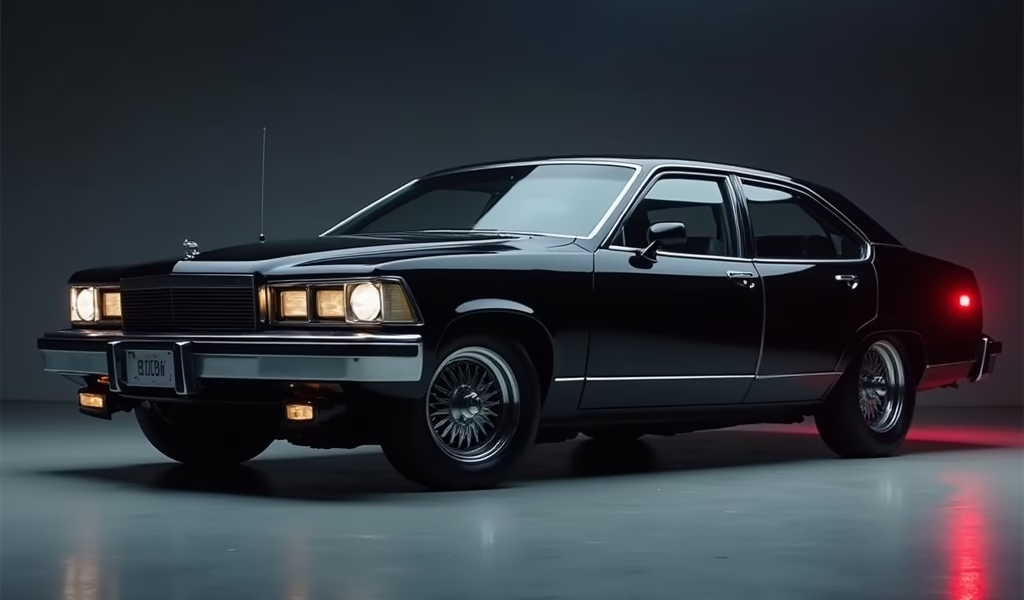Overview
This article provides expert guidance on successfully buying and maintaining used cars, covering everything from pre-purchase inspection and essential maintenance practices to documentation importance and warning signs of potential issues. It emphasizes that finding quality used vehicles requires focusing on reliability records and proper inspection, while extending vehicle lifespan demands regular maintenance, proper driving habits, and prompt attention to emerging problems.
Table of Contents
- Finding Quality Used Cars: What Really Matters
- Pre-Purchase Inspection: Your First Line of Defense
- 5 Essential Maintenance Tips for Your Used Car
- The Importance of Documentation and Service Records
- Cost-Saving Strategies for Used Car Owners
- Extending the Lifespan of Your Pre-Owned Vehicle
- Warning Signs: When to Seek Professional Help
- Conclusion
- Frequently Asked Questions
Finding Quality Used Cars: What Really Matters
The market for used cars offers incredible value for savvy buyers, but navigating it requires insider knowledge. After 20 years in auto repair, I’ve seen firsthand how the right car for sale used can provide years of reliable service when properly vetted and maintained. The difference between a dream find and a money pit often comes down to knowing what to look for before you buy.
When searching for a quality pre-owned vehicle, focus on reliability records rather than just appearance. Manufacturers like Toyota, Honda, and Subaru consistently produce models that maintain their value and performance well beyond 100,000 miles. Remember, a shiny exterior might catch your eye, but it’s what’s under the hood that will determine your long-term satisfaction.
Vehicle history reports are non-negotiable in the used car buying process. These documents reveal accidents, flood damage, title problems, and service records that paint a complete picture of the vehicle’s past life. A clean history report doesn’t guarantee perfection, but multiple reported incidents should raise serious concerns about structural integrity and future reliability.
Consider the vehicle’s age strategically. Cars between 3-5 years old often represent the sweet spot in the used market—they’ve already experienced significant depreciation but typically have plenty of useful life remaining. Many modern vehicles are built to last well beyond 200,000 miles with proper care, making a quality used car a financially sound decision.
Dealerships, private sellers, and certified pre-owned programs each offer different advantages. Dealerships may charge more but often provide limited warranties and more thoroughly inspected vehicles. Private sellers typically offer lower prices but fewer guarantees. Certified pre-owned programs split the difference, offering manufacturer-backed warranties on slightly older models that have passed rigorous inspections.
Pre-Purchase Inspection: Your First Line of Defense
Never—and I mean never—purchase a used vehicle without a pre-purchase inspection by a qualified mechanic. This simple step, costing around $100-200, could save you thousands in unexpected repairs. As a mechanic who’s performed countless such inspections, I’ve identified major issues that weren’t apparent during test drives or casual examinations.
A proper inspection should cover all major systems: engine, transmission, suspension, brakes, electrical, and steering. Your mechanic should also scan for diagnostic trouble codes that might not be triggering warning lights but could indicate developing problems. Ask for a written report detailing any current issues and projections for upcoming maintenance needs.
During your test drive, pay attention to how the vehicle handles at different speeds. Listen for unusual noises when accelerating, braking, or turning. Test all electronic features, including climate control, infotainment systems, and power accessories. Even minor malfunctions can become irritating over time and potentially indicate larger electrical problems.
Leaks are particularly telling in used vehicles. Small puddles or stains under a parked car warrant investigation—they could indicate anything from a minor gasket failure to a serious transmission fluid leak. Fresh fluids with no signs of contamination generally suggest conscientious maintenance by previous owners, which bodes well for overall condition.
Don’t overlook the importance of understanding your legal protections when purchasing a used vehicle. Lemon laws vary by state but may provide recourse for major defects, even in used cars. Research the specific consumer protection laws in your area before finalizing any purchase.

5 Essential Maintenance Tips for Your Used Car
Once you’ve found and purchased your used vehicle, consistent maintenance becomes your primary defense against costly repairs. Here are five critical care tips that will maximize reliability and longevity:
1. Follow a Religious Oil Change Schedule
Oil is truly the lifeblood of your engine. While newer vehicles might specify 7,500 or even 10,000 miles between changes, I recommend more conservative intervals for used cars. Changing oil every 5,000 miles (or 6 months, whichever comes first) provides cheap insurance against accelerated engine wear.
When changing oil, always use the manufacturer-specified grade and viscosity. Modern engines are designed with precise tolerances that depend on specific oil characteristics. Using the wrong oil can compromise fuel economy and potentially cause premature component failure. Additionally, always replace the filter with each oil change—a fresh filter removes harmful particulates that can damage engine bearings.
2. Monitor and Maintain All Fluids
Beyond oil, your used car relies on several other critical fluids. Transmission fluid, coolant, brake fluid, and power steering fluid all require periodic inspection and replacement. Coolant, in particular, becomes more acidic over time, which can damage radiators and heater cores—expensive components to replace.
Check your fluid levels monthly and inspect their condition. Transmission fluid should be red and sweet-smelling, not brown and burnt. Coolant should be clear and bright, not rusty or cloudy. Brake fluid should be clear to amber, never dark brown or black. These simple observations can provide early warning of developing problems before they cause roadside breakdowns.
3. Don’t Ignore Timing Belt Replacement
If your used car has a timing belt (rather than a timing chain), this single maintenance item can mean the difference between years of reliable service and catastrophic engine failure. Most timing belts require replacement between 60,000 and 100,000 miles, depending on the manufacturer.
When the timing belt fails, it can cause valves to collide with pistons in “interference” engines, resulting in thousands of dollars in damage. The replacement cost typically runs $500-1,000, making it expensive but far cheaper than engine reconstruction. Consider this maintenance item non-negotiable, even if the car seems to be running perfectly.
4. Rotate Tires and Check Alignment Regularly
Tire rotation every 5,000-7,000 miles ensures even tread wear and maximum tire life. Uneven wear patterns can indicate alignment problems that, if left uncorrected, will continue to destroy expensive tires prematurely. Moreover, proper alignment improves fuel economy and handling—particularly important in older vehicles.
While having tires serviced, have your wheel bearings inspected. These components typically last 100,000+ miles but can develop play over time. Catching bearing wear early prevents more serious damage to hubs and CV joints. It’s another example of how preventative maintenance saves money in the long run.
5. Keep Your Battery Terminals Clean
Battery connections are often overlooked in routine maintenance, but corrosion at the terminals can prevent proper charging and eventually lead to starting problems. A simple mixture of baking soda and water, applied with an old toothbrush, removes corrosion effectively.
Modern batteries typically last 4-5 years, but used car batteries may be nearing the end of their service life when you purchase the vehicle. Consider replacement a normal maintenance item rather than waiting for failure, especially before winter months when battery capacity is most critical. A wise used car purchase includes budgeting for these predictable maintenance items.
The Importance of Documentation and Service Records
Maintaining detailed service records serves multiple purposes for used car owners. First, it helps you track maintenance intervals and ensure nothing is overlooked. Second, comprehensive service records substantially increase your vehicle’s resale value when you eventually sell. Buyers pay premiums for used cars with documented care histories.
Create a simple spreadsheet or use a car maintenance app to log every service, repair, and even fuel fill-up. Include dates, mileage, work performed, parts replaced, and costs. This information becomes invaluable for diagnosing patterns and predicting future needs. It also helps establish whether recurring problems might justify warranty claims or lemon law protection.
Keep all receipts, especially for major services and repairs. These physical documents provide proof of maintenance that digital records alone cannot. Store them in a dedicated folder, organized chronologically. When selling your vehicle, this folder becomes a powerful selling tool that inspires confidence in prospective buyers.
Pay particular attention to documenting timing belt replacement, transmission service, and major engine work. These high-value maintenance items significantly impact vehicle value and reliability. Many second or third owners have no idea when these services were last performed, putting them at risk of expensive failures that proper documentation could prevent.
Some vehicles now offer digital service records accessible through dealer networks. If your car supports this feature, ensure all maintenance is properly recorded in the system, even if performed at independent shops. These centralized records follow the vehicle through ownership changes and can substantially enhance resale value.
Cost-Saving Strategies for Used Car Owners
Owning a used car doesn’t have to mean constant, budget-draining repair bills. Strategic maintenance and smart ownership practices can significantly reduce long-term costs while maximizing reliability. As someone who’s helped thousands of owners extend vehicle life, I’ve identified several proven money-saving approaches.
Learn to perform basic maintenance yourself. Oil changes, air filter replacement, wiper blade installation, and light bulb changes require minimal tools and save considerable money over time. Online tutorials specific to your make and model make these tasks approachable even for novice DIYers. Just be sure to dispose of used fluids properly at local recycling centers.
Build a relationship with an independent repair shop rather than defaulting to dealerships for service. Independent mechanics typically charge 20-40% less than dealership service departments for identical work, often with more personalized attention. Ask friends for recommendations or check online reviews to find reputable shops specializing in your vehicle’s make.
Invest in quality parts rather than the cheapest available options. The price difference between economy and premium parts is often small, but the difference in longevity can be substantial. This is especially true for components like brake pads, where premium pads might last twice as long as economy alternatives while providing better performance.
Consider purchasing a technical service manual for your specific vehicle. These detailed guides, available online or in print form, provide factory-approved procedures for virtually every repair. Having this resource helps you understand repair recommendations and may even allow you to perform more complex maintenance with the right tools.
Finally, maintain proper insurance coverage but review it annually. As your used car ages, the cost-benefit ratio of comprehensive and collision coverage changes. At some point, the annual premium might exceed the likely payout in case of an accident. Consult with your insurance agent to find the sweet spot between protection and cost for your specific vehicle and circumstances.

Extending the Lifespan of Your Pre-Owned Vehicle
The average age of vehicles on American roads has increased to nearly 12 years, according to Department of Transportation statistics. This trend reflects both improved manufacturing and the financial benefits of extending vehicle life. With proper care, many modern vehicles can reliably surpass 200,000 miles—a threshold that once seemed unattainable.
Driving habits significantly impact longevity. Avoid frequent cold starts followed by short trips that don’t allow the engine to reach operating temperature. These conditions prevent proper oil circulation and lead to moisture accumulation in the oil and exhaust systems. When possible, combine errands into single trips once the engine is warm.
Practice mechanical sympathy in your driving style. Allow your engine and transmission time to warm up before demanding full performance, especially in cold weather. Avoid aggressive acceleration and braking, which stress drivetrain components and increase wear rates. These driving habits not only extend component life but also improve fuel economy.
Protect your vehicle from environmental factors that accelerate deterioration. Garage storage is ideal, but if unavailable, consider a quality car cover for long-term parking. Regular washing removes road salt and environmental contaminants that promote rust and paint degradation. Waxing twice yearly provides additional protection against UV damage and chemical exposure.
Pay attention to unusual sounds, vibrations, or operational changes. Address these symptoms promptly rather than hoping they’ll resolve themselves—they rarely do. Minor issues often escalate into major failures when ignored. This attentiveness, combined with following the tips for buying a used car in the first place, creates a foundation for exceptional longevity.
Warning Signs: When to Seek Professional Help
Even with meticulous maintenance, used cars eventually develop issues requiring professional attention. Recognizing these warning signs early can prevent minor problems from escalating into major repairs. As a mechanic, I’ve seen countless examples where prompt intervention saved owners thousands of dollars.
Warning lights on your dashboard deserve immediate attention. Modern vehicles have sophisticated monitoring systems that detect problems before they’re perceptible to drivers. While not every illuminated light constitutes an emergency, none should be ignored. Consult your owner’s manual to understand the urgency of different warning indicators.
Unusual noises often provide the first indication of developing problems. Grinding sounds during braking indicate worn brake pads that require immediate replacement before they damage rotors. Clicking or popping during turns may signal CV joint failure. Whining noises often indicate bearing wear or fluid problems in power steering or transmission systems.
Fluid leaks merit professional evaluation. While some minor seepage might be monitored, active drips or puddles indicate failing seals or gaskets that will worsen over time. Identify the fluid by color—red for transmission fluid, green or orange for coolant, clear to brown for brake fluid, and brown to black for engine oil—to help your mechanic diagnose the source.
Performance changes like delayed acceleration, rough idling, or decreased fuel economy often indicate developing engine or transmission problems. These symptoms may start subtly but typically worsen over time. Prompt diagnosis often reveals simple solutions like oxygen sensor replacement rather than complex repairs if addressed early.
Finally, trust your instincts. If something feels different about how your vehicle drives or responds, have it checked. Experienced drivers develop a feel for their vehicles and can often detect subtle changes before measurement equipment registers a problem. This intuitive awareness, combined with regular professional inspections, provides the best protection against unexpected breakdowns.
Conclusion
Finding the right car for sale used represents just the beginning of what can be a rewarding ownership experience. With proper inspection before purchase and diligent maintenance afterward, pre-owned vehicles offer exceptional value and reliability. The five essential care tips outlined—religious oil changes, comprehensive fluid maintenance, timely timing belt replacement, regular tire rotation, and battery care—form the foundation of effective used car ownership.
Remember that documentation serves both your immediate maintenance needs and your future resale prospects. Detailed service records transform a used car from an unknown quantity into a proven performer with verifiable history. This documentation, combined with strategic cost-saving approaches and attentive driving habits, can extend vehicle life far beyond average expectations.
When warning signs appear, address them promptly with professional help. Early intervention typically means simpler, less expensive repairs and prevents cascading failures that can render otherwise sound vehicles economically unrepairable. By combining these practices with the knowledge to recognize quality used cars initially, you position yourself for years of reliable, economical transportation.
The used car market continues to evolve, with higher quality vehicles offering longer service lives than ever before. By applying these professional insights to your purchase and ownership experience, you can navigate this market confidently and extract maximum value from your automotive investment. The right car, properly maintained, remains one of the smartest financial decisions most households make.
Frequently Asked Questions
What’s the ideal mileage when buying a used car?
Focus on condition rather than absolute mileage. A well-maintained vehicle with 80,000-100,000 miles often provides better value than a neglected one with lower mileage.
Should I always buy the newest used car I can afford?
Not necessarily. Models 3-5 years old typically offer the best value as they’ve already experienced significant depreciation while retaining most of their useful life.
Are extended warranties worth it for used cars?
Factory extended warranties can provide value, but third-party warranties often contain exclusions that limit their usefulness. Read the fine print carefully before purchasing.
How much should I budget annually for used car maintenance?
Set aside 1-2% of the vehicle’s purchase price annually for routine maintenance. Add an additional 2-3% for a repair fund to cover unexpected issues.
Can I trust the mileage shown on used cars?
Modern digital odometers are difficult to tamper with, but always verify mileage against service records and vehicle history reports. Significant discrepancies warrant further investigation.


Pingback: Best Place to List a Car for Sale – Prep - knowsyourcar.com
Pingback: Cars for Sale Used: Ultimate Care Guide - knowsyourcar.com